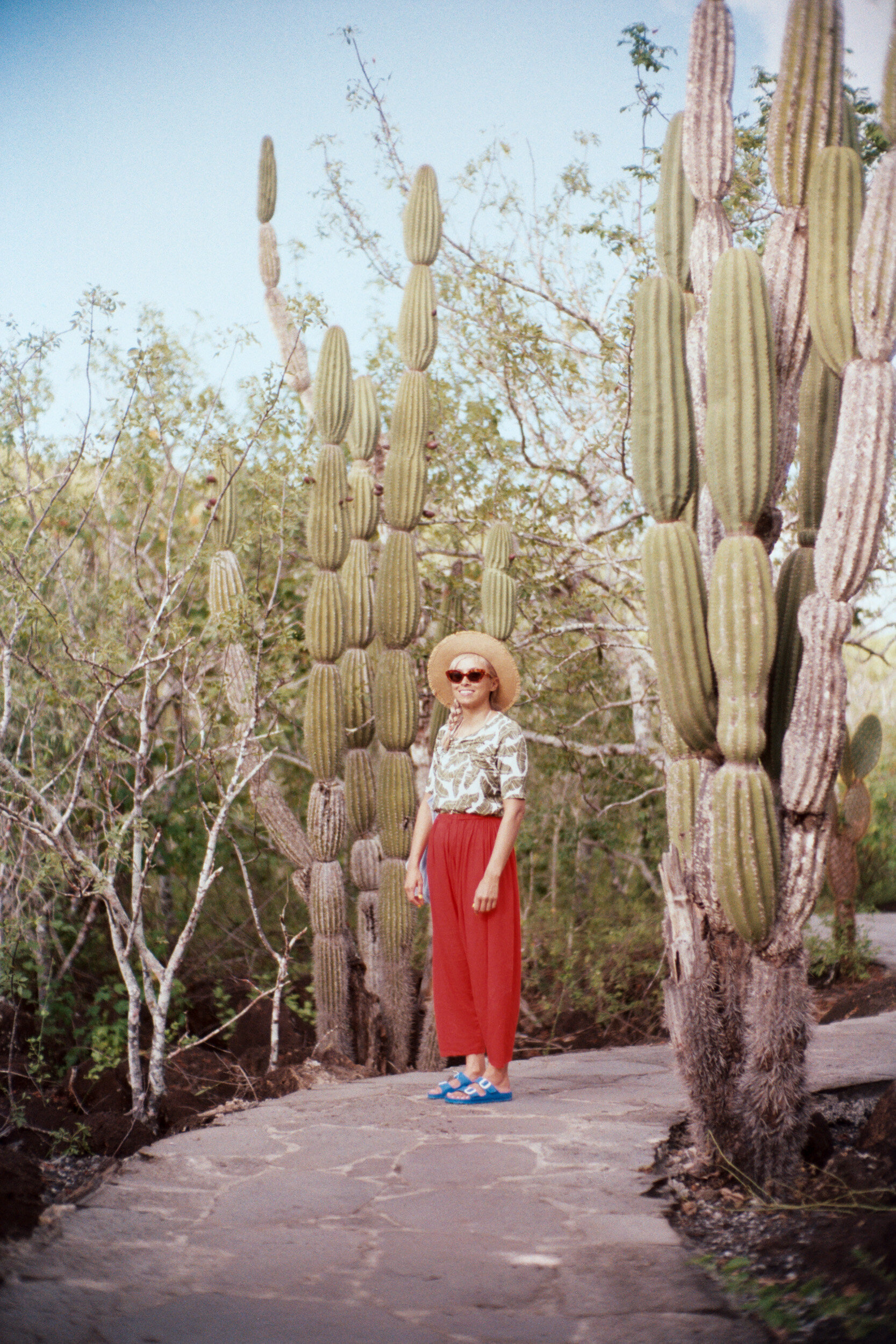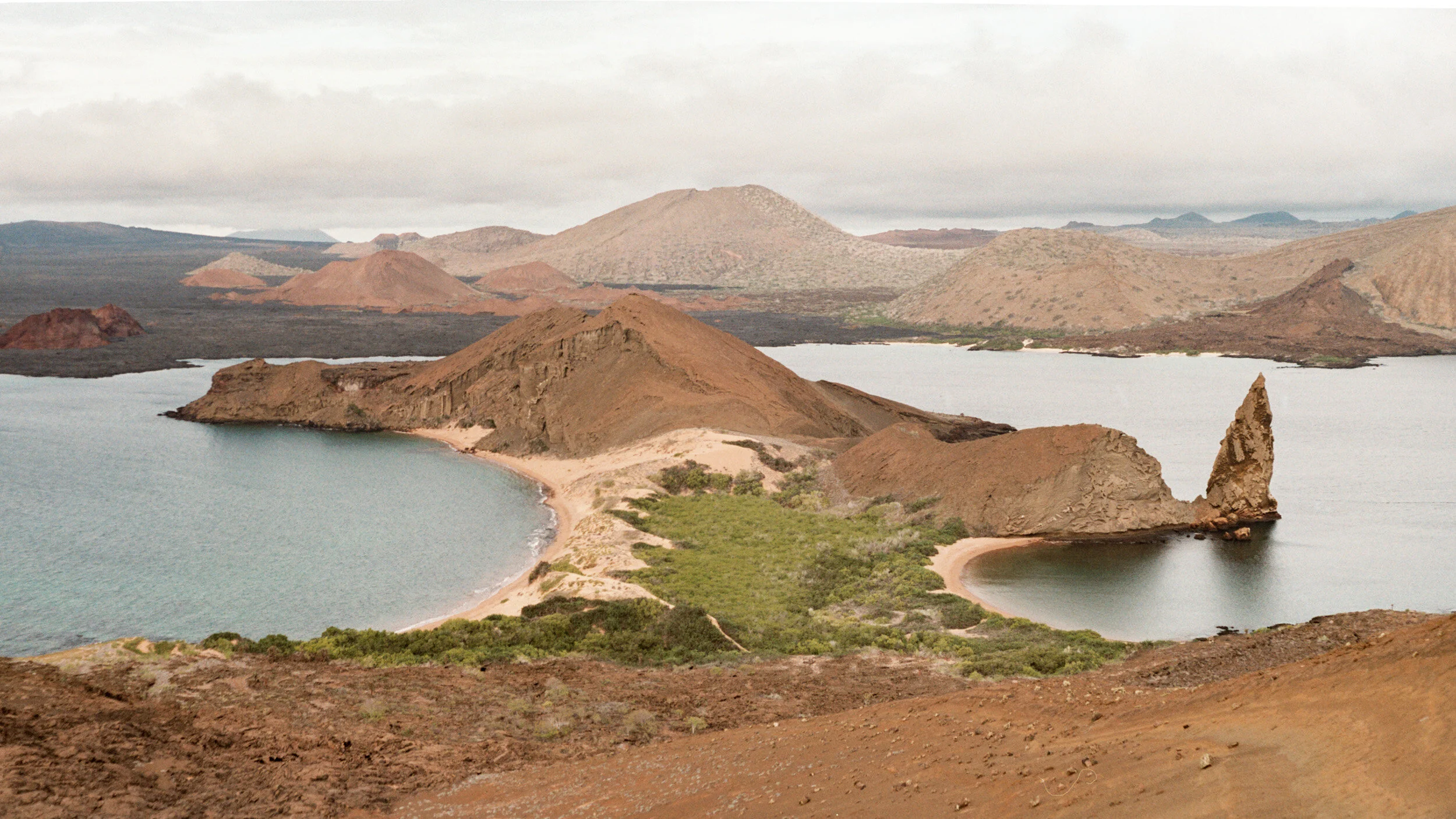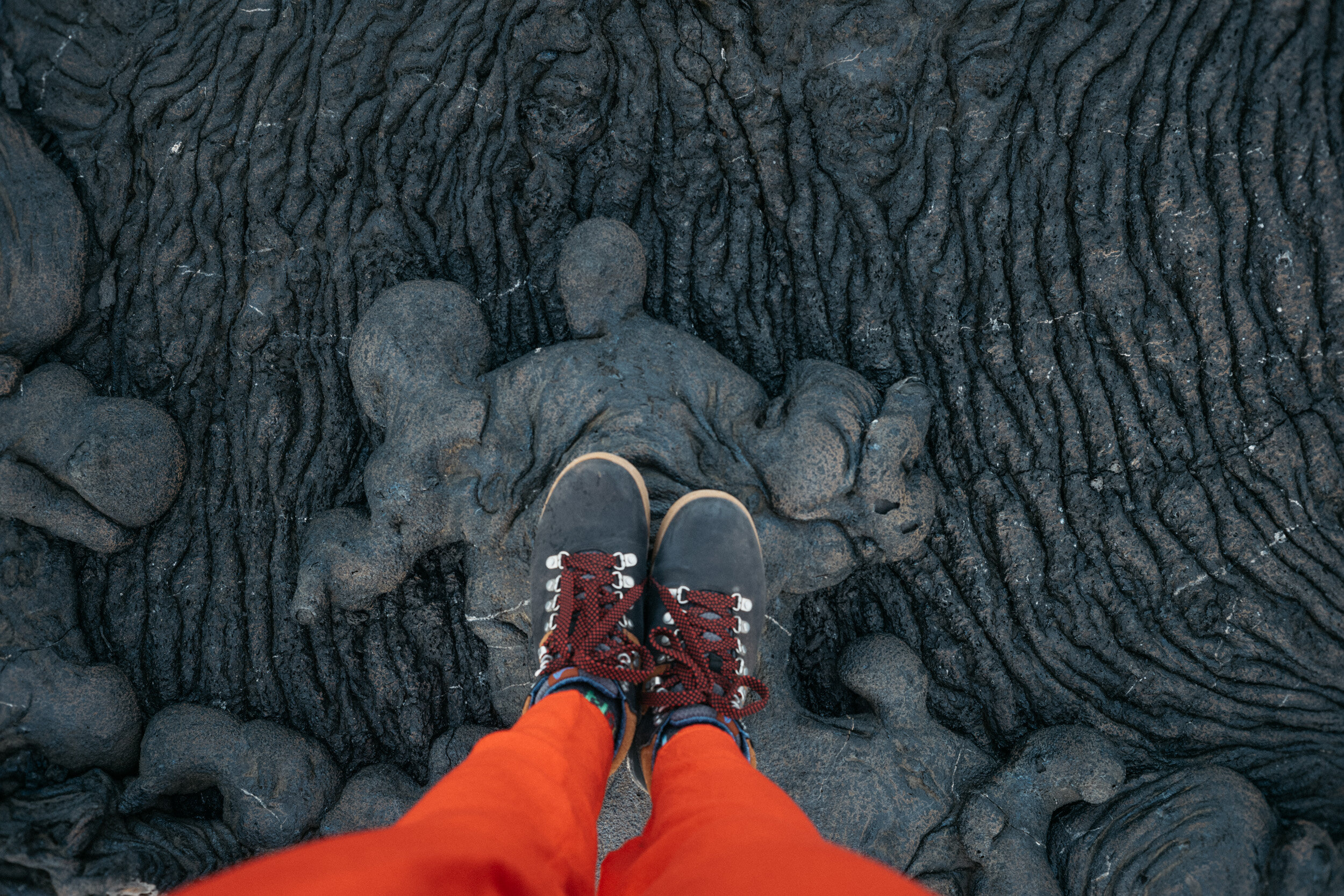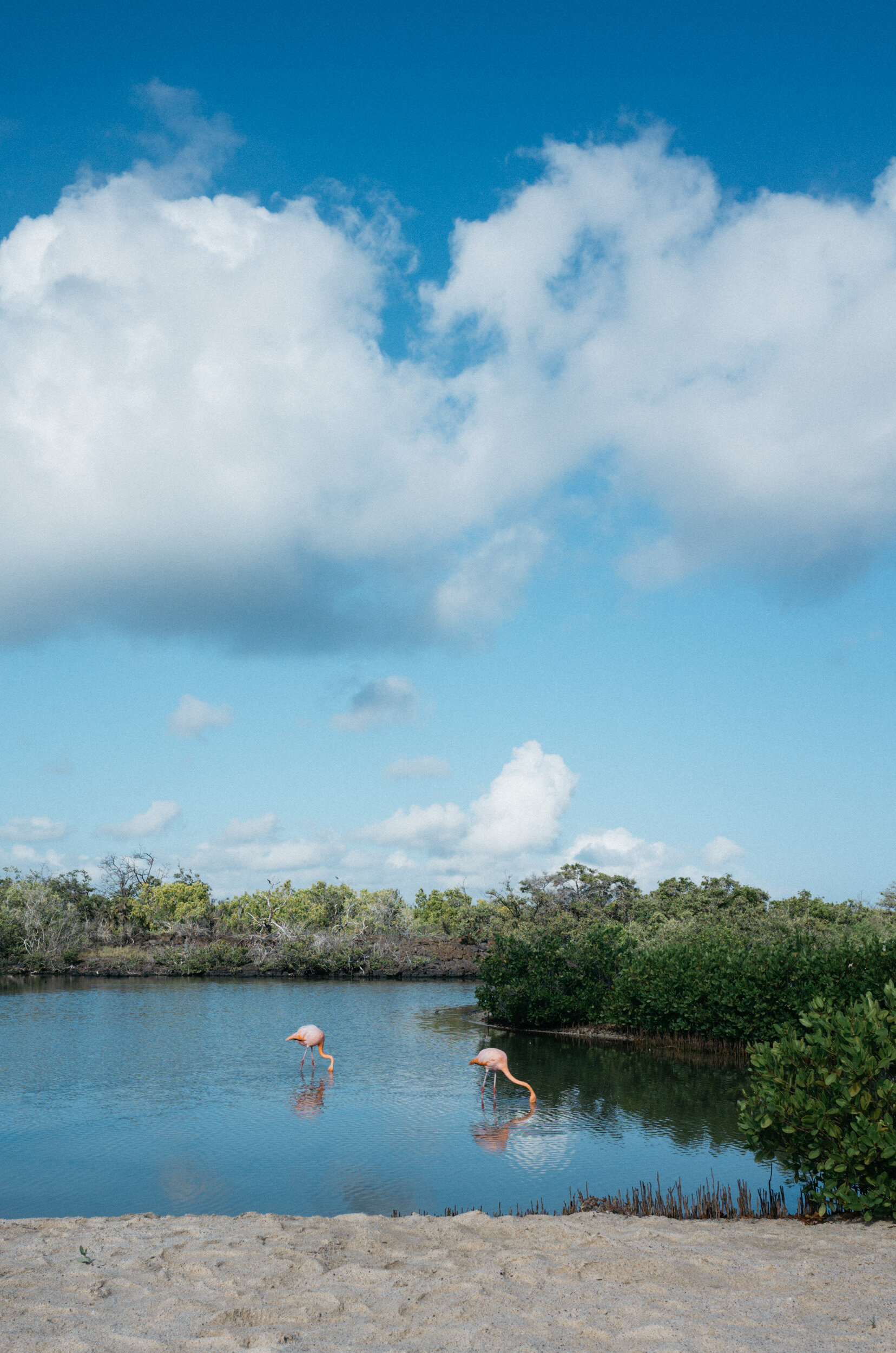Cruising the Galapagos Islands
In April of 2019, my boyfriend Jason and I traveled to the Galapagos Islands, and visited several islands in the volcanic archipelago by live-aboard yacht. We started in the easternmost island; San Cristobal, and spent 8 days exploring the diverse and distinct flora and fauna of each of the islands we visited.
The Galapagos Islands are a protected national park, and the government of Ecuador strictly regulates tourism, development, and boating within the islands. Many places in the Galapagos are uninhabited by people, so the best way to see the most of the Galapagos is on multi-day cruises. By “cruise” I do not mean a lazy vacation on a monstrous corporate cruise ship, but instead on a small yacht that is run by a company that strives to reduce impact on the islands and environment. Most natural sites in the Galapagos only allow a select few small tour groups to travel ashore at a time, so many cruises only accommodate a dozen or so guests. Our trip was on a very comfortable yacht called the “Grand Majestic”; in which we had our own fully furnished bedroom with a private bathroom. The yacht also features very modern common areas, a sun deck with a hot tub, and a full staff that catered to our every need; including serving us three big, delicious meals a day (with many snacks in between), and keeping our room sparkling clean. I don’t ordinarily splurge on luxury when I travel, but I had carefully compared prices of trips before booking, and this trip came up at a discounted price for only slightly more than it would have cost to travel on a bare-bones, economically-priced boat.
Itinerary played a big part in deciding to book this particular trip on this particular yacht. There are a lot of different itineraries out there when you look into booking a trip in the Galapagos, some take you to some islands and not others. For me it was absolutely crucial that I be able to see GALAPAGOS PENGUINS on this trip. I absolutely adore penguins, and I hope to eventually see every species of penguin around the world (in their respective native habitats). The Galapagos penguins only live in the western islands in the archipelago, with most of them living on Isabela and Fernandina islands. Spotting penguins on some of the other islands is possible, but much less likely, and a large majority of boat trips only take you to the central and eastern islands. So it was a bit of work finding an itinerary that included Fernandina and Isabela Islands, on a nice yacht for a decent value.
These photos are my usual mix of film and digital with the occasional GoPro or iPhone shot to fill in the gaps.
san cristobal island
Our trip began on San Cristobal Island, where we flew into the town of Puerto Baquerizo Moreno. Puerto Baquerizo Moreno is a lively little seaside town, with waterfront shops, restaurants, and fabulous beaches close to town. After no more than 5 minutes walking around town, we stumbled across a waterfront park full of sea lions— they were sleeping on benches, scooting around and barking at one another, with no mind paid to the fact that we were there. For the next two weeks, we were at all times surrounded by the abundant wildlife of the Galapagos; sea lions, sharks, iguanas, turtles, tortoises, and penguins, birds, and bugs!
We spent two nights in Puerto Baquerizo Moreno in a guesthouse before leaving for our boat trip. This gave us the opportunity to explore on our own and and get a feel for the local culture. Our first meal in the Galapagos was at a casual food stand on the beach called Patio del Comidas, where Jason and I ate our first of many delicious Ecuadorean meals. I ordered the Encocado de Pescado (fish in coconut sauce), and it was one of the most delicious fish dishes I’ve ever eaten!
The next day we rented snorkels from our guesthouse and walked to Muella Tijeretas, a beach that features a volcanic rocky cove and clear, turquoise water. We snorkeled around the cove, and swam with sea turtles, and dozens of sea lions. The sea lions were so much fun in the water; they are very friendly and curious, and we learned that if you imitate their playful movements underwater, they’ll come right up and swim circles around you and blow bubbles!
out to sea!
Another of the major deciding factors in booking this particular cruise—THE HOT TUB!
Our luxurious room aboard the Grand Majestic yacht.
Our very skilled chef aboard the Grand Majestic.
north seymour island
A massive iguana slowly crossing our path
Our first island destination was North Seymour Island. This tiny island has a flat, dry, desert-like landscape that is home to the nests of many species of birds, as well as lizards and iguanas. We did a little nature walk on the island, and we got our first sightings of the blue footed boobie, and frigatebird. We ended our walk at a sandy beach, where we saw an adorable little sea lion pup sunbathing, and waiting for its mother who was most likely out in the water catching fish.
We went snorkeling along the coast of North Seymour Island, it was our first “deep water snorkeling” experience. Similar to scuba diving; we entered the water from the dinghy boat, and snorkeled together in a group, following our guide. The water was beautifully clear, and we were able to see so many fish, coral, a few rays, and best of all— the cute little reef sharks.
Lizard
Blue footed boobie
Female frigatebird
Bartolomé Island
Tiny Bartolomé island is comprised of reddish orange volcanic rock formations. We went on a short dinghy ride around the island, where we saw birds and sea lions nested in the rock walls above the waters edge. After our dinghy brought us to shore, and we climbed a series of boardwalks and stairs to the top of the island’s volcanic cone, to a viewing platform where we could see a panoramic view of the island, the postcard-famous Playa Dorada (Golden Beach), and other islands in the distance.
Flightless cormorants
View from the top of Isla Bartolomé
fernandina island
Punta Espinosa
Fernandina Island is the easternmost of the Galapagos Islands, and also the youngest. The Galapagos were created by a volcanic hot spot, which formed the islands one by one over millions of years, from east to west. For this reason, the westernmost islands of Fernandina and Isabela look quite different from the islands in the east (they’re comprised of that black lava rock that you’d associate with a recently erupted volcano). Fernandina Island’s barren, black landscape is not somewhere that most plants and animals could survive, yet it’s a place where a select few species are thriving!
This island was one of my favorite islands to visit, it really felt like stepping into a National Geographic or Planet Earth documentary—a truly wild place. I love lizards and iguanas (I actually think they’re cute!), and this island has a large population of marine iguanas; the only sea-going lizards in the world (they actually swim in the ocean to forage seaweed)! When the iguanas are not in the ocean, they spend hours and hours on land motionless and sunbathing, in order to warm their cold-blooded bodies, and recharge for their next ocean outing.
In addition to the marine iguanas, we saw several birds, lava lizards, crabs, and an impressive whale skeleton on our walk around the island.
Marine iguana!
Sunbathing marine iguanas. Like all lizards marine iguanas are cold-blooded, and their bodies do not retain warmth, so during the day they huddle together in the sun to absorb and retain heat.
Whale bones
isabela island
Isabela Island was the island I most wanted to see, because this is the island you’re most likely to see PENGUINS! Isabela Island did not disappoint, on our first dingy ride, we spotted several penguin cuties perched on the rocks above the shore. Galapagos penguins are so little and adorable, they really look like miniature versions of the Jackass penguins from South Africa, or Humboldt & Magellanic penguins of Patagonia.
The northwestern coast of Isabela Island has a very rugged beauty. The brown and black mountains and rocky cliffs shrouded in fog created this ominous, almost treacherous feel to the place.
Punta Vicente Roca
URBINA BAY
Urbina Bay is home to a number of the island’s endemic plant species, including the thin-leaved Darwin´s shrub, and poison-apple tree. We went on a walk through the island’s lush greenery, and spotted several small birds, iguanas, and our first Galapagos Tortoise of the trip!
Poison-apple tree
Somehow this hermit crab climbed up into this tree!
CROSSING THE EQUATOR
Crossing of the Equator was celebrated with champagne in the captain’s cabin as we watched the navigation screen count down to 0.00°N .
Celebratory photo with our Captain as we cross back over the equator!
SANTIAGO ISLAND
SULLIVAN BAY
We walked around on the expansive lava fields at Sullivan Bay on Santiago Island. The bay was named after Bartholomew James Sullivan, the first lieutenant on HMS Beagle, the ship that brought Charles Darwin to the Galapagos. At Sullivan Bay, you get a great visual understanding of the geology of the Galapagos. Here, you can see ancient, reddish volcanic-rock cones protruding out of fresh basaltic “Pahoehoe” flows of lava (Pahoehoe is a Hawaiian word meaning “easy to walk”). These “fresh” fields of lava bubbled up out of the ground just 150 years ago, creating a new layer to the landscape of the island.
This is a "hornito" (Spanish, "little oven") or chimney, which is created when gas rising out of a hole in the ground splatters out lava.
Rope-like Pahoehoe lava formations. Sometimes these formations are called “ropy basalt”.
It’s super fun walking around on these ripply, ropy, blobby lava formations.
santa cruz island
Bachas Beach
Bachas beach is a white sand beach on the north coast of Santa Cruz Island. After the the second world war, the US Army abandoned several barges that eventually washed ashore at this beach. The name came from the locals mispronunciation of the world “barges” which they pronounced “bachas”, and thus, the beach was named “Las Bachas”.
Bachas beach is a picture perfect tropical beach, with white sand and turquoise water. A few rusted fragments of the old WW2 barges remain in the sand… so you wouldn’t want to run on this beach at night. Just inland from the beach is a lagoon, where I was very excited to witness my first ever pink flamingos in the wild! We also saw marine iguanas, sea birds, and bright orange Sally Lightfoot crabs.
PUERTO AYORA
The second to last day afternoon of our cruise was spent anchored in the port of the Galapagos’ main city, Puerto Ayora. We walked around the town, and visited the tortoises at the Charles Darwin Research Station. At the research station, we got to see several species of Galapagos tortoises at every stage of life. Unknown to me prior was that I’d get to see a taxidermied display of the world’s most famous tortoise, Lonesome George. Lonesome George was the last known of his species, the Pinta Island tortoise, who died in 2012 at around 100 years old. Lonesome George had come to symbolize the Galapagos Islands, and animal conservation efforts throughout the world.
One of several living and well tortoises at the Charles Darwin Research Center.
Kicker Rock
Our Galapagos cruise ended with an early morning snorkel at Kicker Rock, a bird and marine sanctuary island off of the coast of San Cristobal Island. At Kicker Rock we kicked our fins our hardest to swim against the current. Despite it being early morning and very calm, the Galapagos and sites like Kicker Rock have very strong ocean currents. Kicker Rock is a well known place to see hammerhead sharks, but we weren’t lucky enough to spot any on our morning snorkel.
Jason about to flop out of the dingy to deep-water snorkel Kicker Rock.
Farewell photo of our Grand Majestic group & guide, Tommy Acosta.
I have taken quite some time to write about our yachting trip in the Galapagos for a few reasons. As usual, I had the hundreds of photos to sift through and narrow down, and then the task of remembering and writing about each and every island we visited. But this trip was not usual, and did not go as any of us guests or the staff had planned or expected. On just our the third day of the trip, very sadly, one of our fellow guests drowned after attempting to wade in the water where there was very strong waves breaking on the beach. Despite the fact that this older gentleman was wearing a lifejacket, it was not possible for our guide or fellow guests to rescue and resuscitate him (despite repeated, desperate attempts).
I debated whether to include anything about this tragic experience in my writeup of this trip, as it undoubtedly changed our experience that week, and continued to weigh heavy on our hearts and minds for the duration of the trip, and beyond. Out of respect for the deceased, his family, our guide, and the entire staff of the Grand Majestic; I’ve decided to exclude any other mention of the incident from this recap of our trip. The Galapagos Islands are a beautiful and very wild place, with many natural hazards. If like me, you love to travel to wild and far flung places— you should always explore with a heightened awareness of your surroundings, and learn CPR and basic first aid… you never know when you’ll need it.

























































